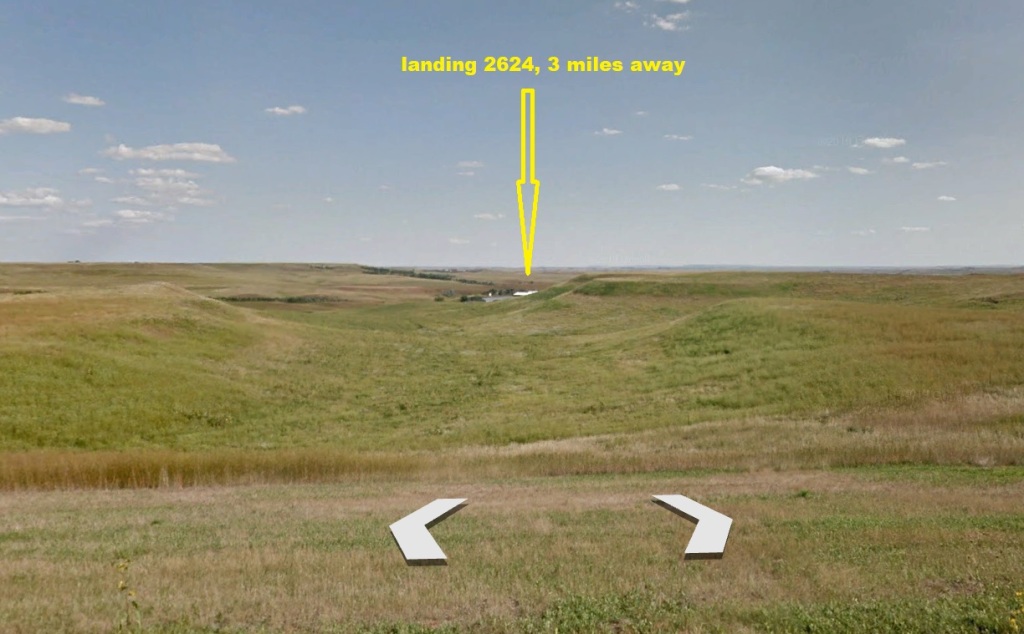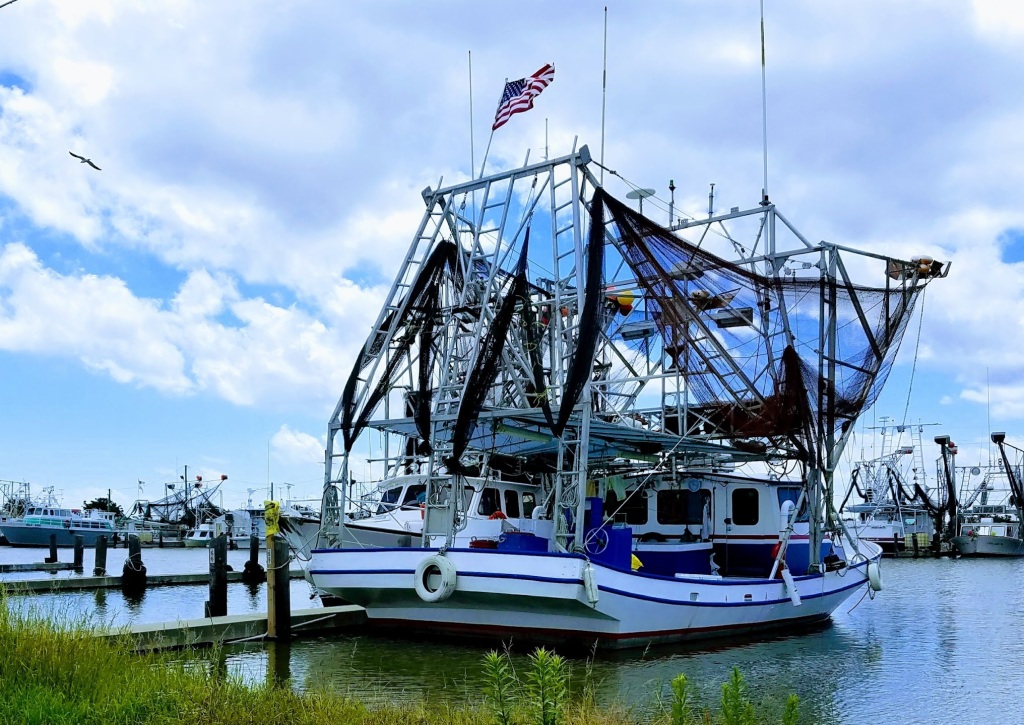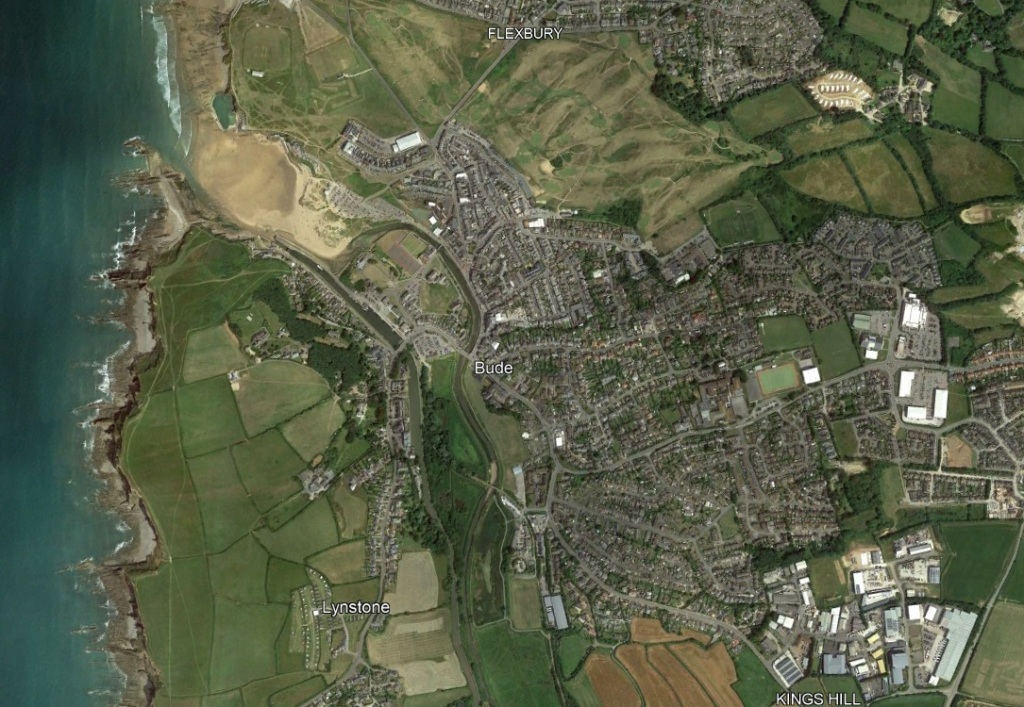First timer? In this formerly once-a-day blog (and now pretty much a once-a-week blog) I use an app that provides a random latitude and longitude that puts me somewhere in the continental United States (the lower 48). I call this “landing.”
I keep track of the watersheds I land in, as well as the town or towns I land near. I do some internet research to hopefully find something of interest about my landing location.
To find out more about A Landing A Day (like who “Dan” is) please see “About Landing” above. To check out some relatively recent changes in how I do things, check out “About Landing (Revisited).”
Landing number 2625; A Landing A Day blog post number 1070
Dan: Today’s lat/long (N41o 3.926’, W85o 37.451) puts me in northeastern Indiana:

Here’s my local landing map:
My streams only map shows that I landed in the watershed of the Eel River:
On to the Wabash (33rd hit), Ohio (162nd hit) and Mississippi (1018th hit).
Over on Google Earth (GE), the Orange Dude found a nearby bridge over the Eel (in South Whitley):
And here’s the river:
The OD found a spot close to my landing:
I landed in my friendly neighborhood corn field:
Before getting to my towns, here’s a little Wiki info on the Eel River:
The Miami Indians called the river Kineepikwameekwa Siipiiwi, meaning “river of the snake fish.” (Don’t skimp on the pronunciation. Take a deep breath and sound the whole thing out – although I’m unsure of the double i’s*). Later French explorers called it the Rivière L’Anguille (Eel River).
* I found a pronunciation guide that said “SEE-pie-a-wee.”
Let’s start out with Pierceton. Of course, I figured that there was some railroad dude named John (or whoever) Pierce who got the town named after him. But no. The town was named after our 14th president, Democrat Franklin Pierce, who served from 1853-1857; serving after Millard Fillmore and preceding Abraham Lincoln.
Of course, there’s a lot of history that I could present, but it’s pretty dry by my taste. Sufficeth to say, he had a difficult presidency, and history has not smiled upon him. He managed to walk the thin line between north & south in the early part of presidency, but ended up supporting pro-slavery measures such as the Kansas-Nebraska Act (which allowed the expansion of slavery to newly-formed western states). Both northerners and southerners had enough of him, and he was abandoned by the Democratic Party and was not nominated to run in 1858.
Here’s Wiki’s take on his place in history:
As a result of his support of the South, as well as failing to hold the Union together in time of strife, historians and scholars generally rank Pierce as one of the worst and least memorable U.S. presidents.
His family life could be termed difficult at best. From Wiki:
Pierce was popular and outgoing, but his family life was difficult. His wife Jane was shy, devoutly religious, and pro-temperance, encouraging Pierce to abstain from alcohol. [He was quite the drinker.] She was somewhat gaunt, and constantly ill from tuberculosis and psychological ailments. She abhorred politics and especially disliked Washington, DC, creating a tension that would continue throughout Pierce’s political ascent.
They had three sons, all of whom died in childhood. Franklin Jr. died in infancy, while Frank Robert died at the age of four from epidemic typhus. Benjamin died at the age of 11 in a train accident.
About the train wreck:
Pierce began his presidency in mourning. Weeks after his election, on January 6, 1853, the President-elect and his family were traveling from Boston by train when their car derailed and rolled down an embankment. Both Franklin and Jane Pierce survived, but their only remaining son, 11-year-old Benjamin, was crushed to death in the wreckage. Pierce was not able to hide the gruesome sight from his wife.
They both suffered severe depression afterward, which likely affected Pierce’s performance as president. Jane Pierce wondered if the train accident was divine punishment for her husband’s pursuit and acceptance of high office. She wrote a lengthy letter of apology to “Benny” for her failings as a mother.
Ouch. No wonder Franklin was a heavy drinker. He did of cirrhosis of the liver at age 64.
On to South Whitley, the town closest to my landing. Under “Notable People,” Wiki mentions one Will Cuppy, humorist and journalist. The following undifferentiated excerpts are from Wiki and the Indiana History Blog piece by Jessie Cortesi (great name!) entitled “Do Fish Think, Really?” and Will Cuppy’s other musings”:
William Jacob Cuppy (1884 – 1949) was an American humorist and literary critic, known for his satirical books about nature and historical figures.
Cuppy was born in Auburn, Indiana but spent summers at a farm belonging to his grandmother on the banks of the Eel River near South Whitley, Indiana. He later said that this was where he acquired his early knowledge of the natural world which he satirized in his writings.
He graduated from the University of Chicago and served stateside during WW I, and then moved to New York City to pursue a writing career. In 1926, Cuppy began writing a weekly “Mystery and Adventure” column for the New York Herald Tribune, a platform for his reviews of crime and detective fiction works. He continued writing the column until his death 23 years later, reviewing a career total of more than 4,000 titles
In 1921, Cuppy moved into a tarpaper and tin shack on Jones’ Island in New York. Suffering from hypersensitivity to sound, Cuppy wished to escape the noise of the city. He lived on the island year-round for eight years, with occasional visits to the city for supplies. The men of the Coast Guard station a few hundred feet down the beach befriended him and shared food, as well as fixed his typewriter. Cuppy called his beach home Tottering-on-the-Brink, giving insight into his mental health. But despite his seclusion, Cuppy’s career progressed.
Cuppy published a book about his experience living on Jones’ Island in 1929, How to Be a Hermit (Or A Bachelor Keeps House). The book was a best-seller—reprinted six times in six months—and put Cuppy on the map as a humorist and author. In traditional Cuppy fashion, he quipped “I hear there’s a movement among architects to use my bungalow as a textbook example of what’s wrong with their business.” And then there was this telling jest:
Coffee! With the first nip of the godlike brew I decide not to jump off the roof until things get worse—I’ll give them another week or so.
[I’m reading this book; more about it in a bit.]
Then, in 1929, Cuppy had to leave his shack because New York designated the area to become a state park, although he received permission to visit his hermitage for irregular vacations. Cuppy moved to an apartment in Greenwich Village, but even after he left his residence at Jones’ Island he would sometimes be referred to—and refer to himself—as a hermit because he continued to maintain an isolated lifestyle.
Predictably, Cuppy found it difficult to stand the noise of the humming city. He tended to sleep during the day and work during the night to minimize his exposure to the cacophonous sounds. When it all got to be too much, Cuppy would blow on noisemaker as hard as he could out an open window.
From his Greenwich Village apartment, Cuppy continued to turn out magazine articles and books.
Writing funny but factual magazine articles was Cuppy’s real talent. He enjoyed a brief success in 1933 with a humorous talk show on NBC radio with actress and gourmet cook Jeanne Owen. Basically shy, Cuppy was happiest when he was rummaging through scholarly journals prizing out facts to copy out on his note cards. One of Cuppy’s favorite places was the Bronx Zoo, “where he felt really relaxed.”
Many of Cuppy’s articles for The New Yorker and other magazines were later collected as books: How to Tell Your Friends from the Apes (1931); and How to Become Extinct (1941).
Cuppy’s best-known work, a satire on history called The Decline and Fall of Practically Everybody was unfinished at his death, but was completed by his friend and editor, Fred Feldkamp. The book’s appeal can be gauged by the fact that CBS broadcaster Edward R. Murrow and his colleague Don Hollenbeck took turns reading from it on the air “until the announcer cracked up.”
The Decline and Fall was completed and published in 1950 by Feldkamp, who sifted through nearly 15,000 of Cuppy’s carefully filed note cards to get the book into print within a year of his friend’s death.
Cuppy’s style was characterized by a satirical take on nature and historical figures. Footnotes were his comedic specialty. Here’s a sample from Decline and Fall:
Cuppy’s last years were marked by poor physical health and increasing depression. In 1949, facing eviction from his apartment, he took an overdose of sleeping pills and died ten days later.
Like I said earlier, I’m reading “How to be a Hermit.” Here’s one of many memorable quotes:
Five million housewives (or is it ten?) are asking every morning, as regular as clockwork, “What shall we have for breakfast?” Of course, I don’t really believe it any more than you do, but that’s what I saw in an ad.
All history goes to prove that many of these ladies would be asking other things at the time: do we look like slaves? Is this Russia? what did we ever see in you, anyway? and why don’t you get up and get your own breakfast, you great big lazy loafer?
Some housewives would not be speaking to the family at al, and others wouldn’t be home yet.
It seems a little strange to a certain bachelor that the husbands of all these housewives have not done something to answer or otherwise silence this eternal query. If I were married to housewife who asked me each dewy morn, as I was trying to get another wink of sleep, “What shall we have for breakfast?” I would simply reply “What have you got?” or “Anything you want, dear!”
If she kept it up I would add, “Look in the pantry, darling and act accordingly, and you may be sure that whatever you bring me on my tray will be perfectly okay with me, and would you mind slipping me the morning paper, Angel-face?”
A technique for stubborn cases may easily be improvised by a quick study of the Cro-Magnons and Henry VIII.
And now for a quick stop in Bippus. Wiki tells us that it’s the hometown of Chris Shenkel (1923 – 2005):
Over the course of five decades he called play-by-play for numerous sports on television and radio, becoming known for his smooth delivery and baritone voice.
I remember him well from my untold hundreds (thousands?) of hours of TV sports viewing back in the day. While doing a little research, I discovered that he did the play-by-play for a huge 1969 college football game: #1 Texas (9-0) vs. #2 Arkansas (also 9-0). Check out what Wiki said in the “Legacy” section of their entry about the game:
This game has been nicknamed “Dixie’s Last Stand”, since it was the last major American sporting event played between two all-white teams. However, major college football was not completely integrated until 1972 when the final holdouts, LSU and Ole Miss, fielded their first black varsity members.
Wow. Amazing that this was the situation not all that long ago . . .
I’ll close with this shot of the Eel River posted on GE by Mike Fromholt just 2 miles NW of my landing:
That’ll do it . . .
KS
Greg
© 2023 A Landing A Day































































































